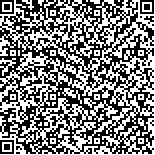| 本文已被:浏览 802次 下载 357次 |

码上扫一扫! |
| 饲粮微量元素不同用量组合对黄羽肉鸡生产性能、胴体指标及肉品质的影响 |
|
王一冰,王薇薇,苟钟勇,李龙,林厦菁,范秋丽,叶金玲,崔小燕,蒋守群
|
|
|
| (广东省农业科学院 动物科学研究所/畜禽育种国家重点实验室/农业部华南动物营养与饲料重点实验室/广东省动物育种与营养公共实验室/广东省畜禽育种与营养研究重点实验室, 广州 510640) |
|
| 摘要: |
| 为探究饲粮中微量元素不同用量组合对黄羽肉鸡生长性能、胴体指标与肉品质的影响,选用1 日龄岭南黄鸡为试验鸡,共设3 个处理:组1饲粮微量元素水平参照NRC(1994)[14]的营养需要量;组2参照广东典型市售鸡矿产品的微量元素水平;组3参考本课题组前期的微量元素需要量的研究结果。饲喂周期63 d。结果表明:1~21 日龄阶段,与组1试鸡相比,组3和组2试鸡的平均日增重与平均日采食量均得到显著提高(P<0.05);22~42日龄阶段,与组1试鸡相比,组3的末重显著增加(P<0.05)、料重比显著降低(P<0.05),组1与组2试鸡的各项指标均无显著差异(P>0.05);43~63 日龄阶段,组3试鸡的末重较组1、组2试鸡均显著提高(P<0.05)。组3试鸡的半净膛率相较于组1显著增加(P<0.05)。63 日龄胸肌肉品质分析表明,与组1试鸡相比,组2与组3试鸡的肉色红度值显著提高(P<0.05)、滴水损失显著降低(P<0.05),且组2试鸡剪切力、组3试鸡的肉色黄度值显著降低(P<0.05)。综上,饲粮微量元素不同组合对黄羽肉鸡生长性能、胴体指标与肉品质影响显著,组2和组3均可提高肉鸡生长性能、改善肉品质,其中组3对生长性能的促进作用优于组2。 |
| 关键词: 黄羽肉鸡 微量元素 生长性能 肉品质 胴体指标 |
| DOI:10.11841/j.issn.1007-4333.2020.03.08 |
| 投稿时间:2019-09-29 |
| 基金项目:国家重点研发计划(2018YFD0500600);国家肉鸡产业技术体系项目(CARS-41-G10);国家自然科学基金青年基金(31802104);广东省自然科学基金项目(2017A030310096);国家“十二五”科技支撑计划项目子课题(2014BAD13B02);广东省科技计划项目(2017B020202003);广州市科技计划重点项目(201804020091);广东省农业科学院院长基金项目(201620, 201805, 201807B, 201809B,201908);广东省农业科学院乡村振兴地方分院与专家工作站经费项目(2018驻点12-29) |
|
| Effects of different combinations of dietary trace elements on the growth performance, carcass trait and meat quality of yellow-feathered broilers |
|
WANG Yibing,WANG Weiwei,GOU Zhongyong,LI Long,LIN Xiajing,FAN Qiuli,YE Jinling,CUI Xiaoyan,JIANG Shouqun
|
| (Institute of Animal Science/State Key Laboratory of Livestock and Poultry Breeding/Key Laboratory of Animal Nutrition and FeedScience in South China, Ministry of Agriculture and Rural Affairs/Guangdong Public Laboratory of Animal Breeding and Nutrition/Guangdong Key Laboratory of Animal Breeding and Nutrition, Guangdong Academy of Agricultural Sciences, Guangzhou 510640, China) |
| Abstract: |
| The purpose of this experiment was to explore the effects of different combinations of dietary trace elements on the growth performance, carcass trait and meat quality and provide theoretical and technical support for safe and efficient breeding of yellow-feathered broilers. One-day-old chicks were selected and randomly divided into three groups: Group 1 was similar to NRC(1994)[14]; Group 2 was one typical product in Guangdong; Group 3 was referred to our previous researches. The feeding period was 63 days. The results showed that: Compared with broilers in group 1, the average daily gain and average daily feed intake of broilers in group 3 and group 2 were increased significantly(P<0. 05)at 1-21 days; At the stage of 22-42 days, the final weight of broilers in group 3 was increased significantly(P<0. 05)and the feed weight ratio was decreased significantly(P<0. 05)compared with those in group 1, but there was no significant difference in growth performance between group 1 and group 2(P>0. 05); The final weight of broilers aged 43-63 days in group 3 was significantly higher than that in group 1 and 2(P<0. 05). The half-eviscerated rate of broilers in group 3 was significantly higher than that of group 1(P<0. 05). The analysis of meat quality showed that compared with broilers in group 1, the meat color redness value was increased significantly(P<0. 05)and the drip loss was decreased significantly(P<0. 05)in both group 2 and 3. Furthermore, the shear force in group 2 and the meat color yellowness value in group 3 were decreased significantly(P<0. 05). In conclusion, different dosage combinations of dietary iron, copper, zinc, manganese, selenium and iodine displayed significant effects on the growth performance, carcass trait and meat quality of yellow-feather broilers. The dosage of dietary iron, copper, zinc, manganese, selenium and iodine in group 3 and 2 both improved the growth performance and meat quality of broilers compared with that in group 1. Group 3 was better in promoting growth performance than group 2. |
| Key words: yellow-feathered broiler trace element growth performance carcass trait meat quality |